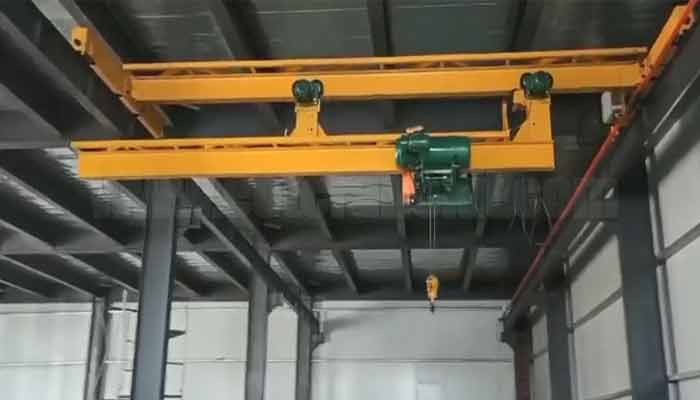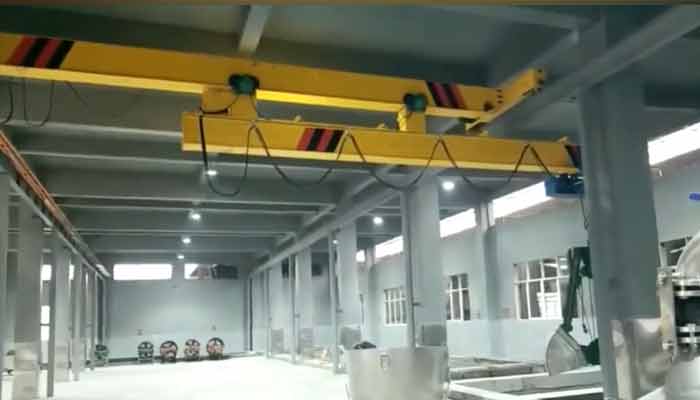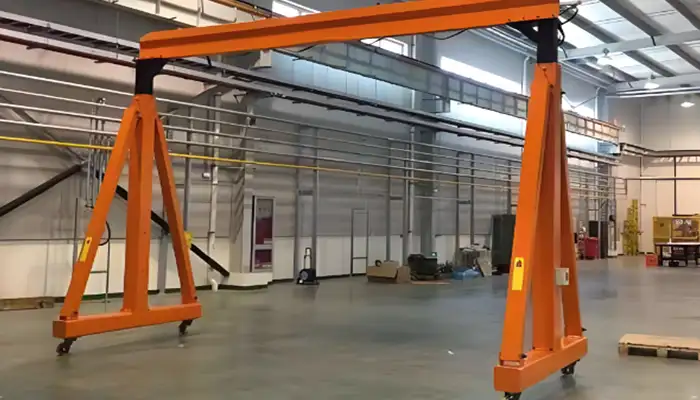
Telescopic Cranes: Mastering Complex Environments with Versatile Solutions
Telescopic cranes offer essential flexibility and reach, enhancing material handling efficiency in challenging spaces across construction, warehousing, and maintenance sectors.
Definition of Telescopic Cranes
Telescopic cranes are versatile lifting machines designed to extend both vertically and horizontally. Their unique structure consists of a series of sections that slide out or retract, allowing for adjustable lifting heights and reach. This design makes them particularly useful in tight spaces where traditional cranes may struggle. Telescopic cranes can be equipped with various attachments, such as hooks, clamps, or forks, enhancing their ability to handle different types of loads. The hydraulic or mechanical systems that power these cranes enable smooth and precise movements, ensuring that materials can be lifted and positioned with accuracy.
Importance in Various Industries
Telescopic cranes play a vital role in a range of industries due to their flexibility and efficiency. In the construction sector, they are essential for lifting heavy materials like steel beams and concrete panels to significant heights, facilitating the construction of high-rise buildings. Their ability to reach over obstacles makes them invaluable in urban environments, where space is often limited.
In manufacturing, telescopic cranes streamline assembly line operations by moving components across expansive factory floors, ensuring smooth workflows. They are also crucial in warehousing and logistics, where they assist in loading and unloading goods, as well as transporting materials between different levels in multi-story facilities.
Additionally, these cranes are indispensable in maintenance operations, allowing workers to access hard-to-reach areas for repairs and inspections without the need for scaffolding. Overall, the adaptability and efficiency of telescopic cranes make them essential tools across multiple sectors, enhancing productivity and safety in various material handling tasks.
Features of Telescopic Cranes
Extended Lifting Height
Telescopic cranes are designed to achieve impressive vertical reach through a series of extending sections. This multi-section design allows operators to elevate loads significantly higher than traditional cranes, making them ideal for various applications in construction, maintenance, and more.
Applications of Extended Height:
- Ideal for construction sites needing to lift steel beams, concrete panels, or roofing materials to upper floors.
- Used in maintenance tasks where equipment must be accessed at height, such as in large industrial facilities or on high-rise buildings.
Space Utilization:
- The ability to reach great heights without requiring additional support structures optimizes workspace usage, especially in areas with limited ground space.

Telescoping bridge crane for difficult area material handling
Horizontal Reach Capabilities
Telescopic cranes stand out for their ability to extend horizontally, facilitated by sliding or extendable cantilevers. This feature allows for precise load positioning in confined areas.
Sliding Cantilevers:
- Cantilevers can be deployed to extend beyond the main body of the crane, enabling it to reach around obstacles or over barriers.
- This flexibility is particularly useful in urban environments where space is constrained.
Applications for Horizontal Reach:
- Essential for placing materials beyond walls, such as in high-rise construction where materials need to be delivered to elevated positions without interfering with ground-level operations.
- Useful for window installations and façade work, allowing workers to reach out over building edges without scaffolding.
Efficiency Improvement:
- Reduces the need for multiple crane repositionings, enhancing workflow and saving time on job sites.
Applications in Challenging Environments
Construction Sites
Telescopic cranes are invaluable on construction sites, where the ability to handle materials at significant heights and navigate around obstacles is critical.
Handling Materials at Great Heights:
- These cranes excel at lifting heavy materials, such as steel beams and concrete slabs, to upper floors of multi-story buildings.
- Their extended lifting height allows for efficient vertical transport, reducing the need for additional equipment or labor.
Overcoming Obstacles:
- The horizontal reach capabilities enable cranes to position materials accurately over other structures or equipment, facilitating seamless construction workflows.
- This flexibility minimizes disruption to ongoing operations and enhances site productivity.
Urban Areas
In urban environments, where space is often at a premium, telescopic cranes are particularly effective for their maneuverability and compact design.
Maneuvering in Tight Spaces:
- These cranes can operate in confined areas, allowing construction or maintenance work to proceed without requiring extensive ground space.
- The ability to extend cantilevers horizontally helps to reach loads positioned beyond barriers or walls, making them ideal for city building projects.
Limited Ground Access:
- Telescopic cranes can be positioned on narrow streets or busy urban sites, reducing the need for extensive street closures or detours.
- Their compact footprint allows them to work in areas where traditional cranes would struggle, ensuring continued operation in densely populated regions.
Warehousing and Distribution Centers
In warehousing and logistics operations, telescopic cranes facilitate efficient material handling and inventory management.
Vertical Transport Between Levels:
- These cranes are effective for moving goods between different levels of a warehouse, particularly in multi-story facilities.
- Their extended height allows for quick and efficient loading and unloading of pallets and heavy items.
Efficient Inventory Management:
- Telescopic cranes assist in reorganizing inventory by moving materials to and from various storage areas with ease.
- This capability helps maintain an organized and accessible warehouse layout, improving overall operational efficiency.
Maintenance and Repair Operations
Telescopic cranes play a crucial role in maintenance and repair tasks, especially in industries with complex machinery and equipment.
Accessing Hard-to-Reach Areas:
- These cranes are designed to reach elevated machinery or equipment, enabling technicians to perform necessary servicing without extensive scaffolding or lifts.
- Their ability to extend both vertically and horizontally ensures that maintenance tasks can be completed safely and efficiently.
Facilitating Equipment Servicing:
- Telescopic cranes allow for easy lifting of tools and replacement parts directly to the work area, minimizing downtime during repair operations.
- This capability is particularly valuable in large industrial facilities where access to equipment can be challenging.
In summary, the applications of telescopic cranes in construction, urban areas, warehousing, and maintenance highlight their versatility and effectiveness in navigating challenging environments. Their ability to handle materials efficiently while ensuring safety makes them essential tools across various industries.
Benefits of Using Telescopic Cranes
Versatility Across Applications
Telescopic cranes are designed to adapt to a wide range of tasks and environments, making them highly versatile tools in various industries.
Adaptability to Different Tasks
- These cranes can be configured for various lifting tasks, whether in construction, manufacturing, or logistics.
- Their extendable design allows operators to customize the crane’s reach and height based on specific project requirements.
Suitability for Diverse Environments
- Telescopic cranes excel in both indoor and outdoor settings, proving effective in tight spaces, urban areas, and expansive construction sites.
- This flexibility allows businesses to utilize telescopic cranes across multiple projects without needing different equipment for each task.
Efficiency in Material Handling
The efficiency of telescopic cranes significantly enhances material handling processes, leading to time and labor savings.
Time Savings
- The ability to quickly extend and retract allows for rapid repositioning of materials, reducing downtime during operations.
- Their design minimizes the need for additional equipment, such as scaffolding or lifts, streamlining workflows.
Labor Savings
- With improved lifting capabilities, fewer personnel are required to manage heavy loads, enabling teams to focus on other critical tasks.
- The cranes’ ease of use allows operators to perform tasks more efficiently, further increasing productivity on-site.
Enhanced Safety Features
Safety is a primary concern in any industrial environment, and telescopic cranes are equipped with features that lower the risk of accidents.
Stability Mechanisms
- Many telescopic cranes come with built-in stability features, such as wide bases and stabilizing outriggers, which prevent tipping during operation.
- These mechanisms provide a secure platform for lifting materials at significant heights.
User-Friendly Controls
- The cranes often feature intuitive control systems, allowing operators to manage lifting tasks more easily and accurately.
- Enhanced visibility from the operator’s platform contributes to safer maneuvering in crowded or complicated workspaces.
In summary, telescopic cranes offer significant advantages, including versatility, efficiency in material handling, and enhanced safety features. These benefits make them essential tools for modern industrial operations, contributing to improved productivity and safer working environments.
Considerations for Selection and Use
Assessing Operational Needs
When selecting a telescopic crane, it's crucial to evaluate various operational factors to ensure the chosen equipment meets the specific demands of your tasks.
Load Capacity
- Determine the maximum weight that will need to be lifted, as telescopic cranes come with varying load capacities.
- Choose a model that comfortably exceeds your maximum load requirements to ensure safety and efficiency.
Lifting Height and Reach
- Assess the vertical and horizontal reach needed for your operations.
- Consider whether the crane will need to navigate obstacles or extend beyond the structure’s girders, as this will influence your choice.
Work Environment
- Evaluate the work environment, including space constraints and surface conditions.
- Telescopic cranes are suitable for tight urban areas or expansive construction sites, but ground stability and accessibility should be checked beforehand.
Frequency of Use
- Consider how often the crane will be used. For frequent applications, investing in a more robust and feature-rich model may provide long-term benefits.
Maintenance and Training
Regular maintenance and proper operator training are vital for maximizing the safety and efficiency of telescopic cranes.
Importance of Regular Maintenance
- Scheduled inspections and maintenance are essential to ensure that all mechanical and safety features function correctly.
- Regular checks can help prevent breakdowns, ensuring continuous operation and reducing downtime.
Operator Training
- Comprehensive training for operators is crucial to ensure safe and effective use of the crane.
- Training programs should cover the crane’s controls, load management, and emergency procedures to prepare operators for various scenarios.
Compliance with Safety Standards
- Ensure that both the crane and operators comply with industry safety regulations.
- Familiarity with safety protocols minimizes the risk of accidents and promotes a culture of safety within the workplace.
In conclusion, selecting and using a telescopic crane requires careful consideration of operational needs and a commitment to maintenance and training. By assessing these factors, organizations can ensure they maximize the benefits of telescopic cranes while maintaining a safe and efficient working environment.
Conclusion
Telescopic cranes play a vital role in navigating challenging environments across various industries. Their ability to extend both vertically and horizontally makes them indispensable for tasks that require precise material handling in confined spaces or at great heights. Whether on construction sites, in urban areas, or within warehouses, telescopic cranes enhance operational efficiency by providing the necessary reach and stability to handle diverse loads. Their adaptability allows businesses to streamline processes, reduce labor costs, and improve safety, making them essential tools in modern material handling operations.
In summary, telescopic cranes will continue to evolve, driven by technological advancements and the growing demand for efficient and safe material handling solutions. Embracing these innovations will be crucial for businesses aiming to maintain a competitive edge in the industry.
